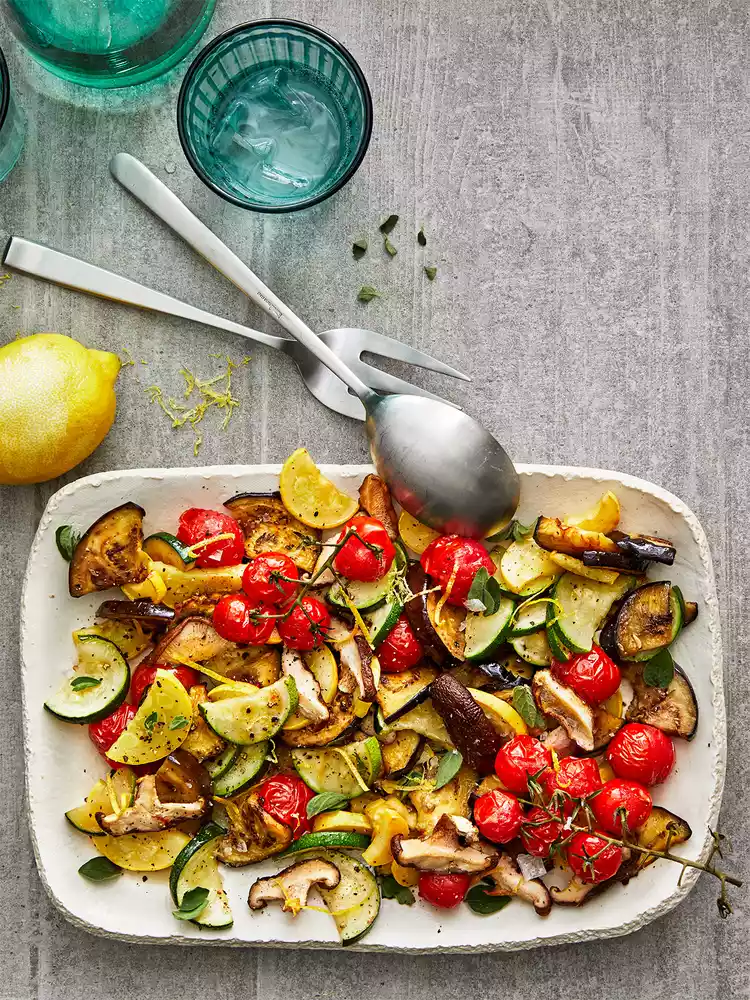8 Tips for Starting a Low-Carb Diet That You Can Easily Maintain

Switching to a low-carbohydrate diet requires more than just swapping meat for pasta and eggs for your morning bagel. The following tips, suggestions, and advice will help ease the transition from a high- to a low-carbohydrate diet. Read on for easy ways to navigate a low-carb diet at restaurants, at home, and on the go. We're even sharing our best low-carb recipes including ideas for dinner and filling side dishes.
Make Every Carbohydrate Count
When you eat carbohydrates, reach for complex carbohydrates such as whole-grain bread and pasta, legumes, nonstarchy fruits, and vegetables.
Pick Produce that Triggers Lower Glucose Response
Fruits and vegetables with the lowest glycemic index include apples, apricots, asparagus, broccoli, Brussels sprouts, cauliflower, celery, cherries, cucumber, grapefruit, green beans, lettuce, mushrooms, onions, plums, spinach, strawberries, sweet peppers, tomatoes, and zucchini. Moderate-GI produce includes cantaloupe, grapes, oranges, orange juice, peaches, peas, pineapple, yams, and watermelon. High-GI fruits and vegetables include bananas, beets, carrots, corn, potatoes, and raisins.
Read Labels
Food labels are required to show how many grams of carbohydrates are in each serving. By reading labels carefully, you can track how many carbohydrate grams are in all the foods you eat.
Think Ahead When Dining Out
You can eat in restaurants when you're on a low-carbohydrate diet. Pick a restaurant whose menu doesn't revolve around bread or pasta; a seafood restaurant is an excellent choice. Second, plan your day's diet around the restaurant meal. If you've got your heart set on a hunk of French bread at dinner, go light on carbohydrates at breakfast and lunch. Third, when you place your order, don't be afraid to ask the server to leave off the bun or breading. You're paying for the meal, after all, and it should be served the way you like it.
Stock Your Kitchen
Fill the pantry and fridge with nonstarchy fruits and vegetables, fresh fish and shellfish, lean meats and poultry, dairy products, and nuts or seeds.
Go Nuts About Nuts
A variety of studies have shown that peanuts and other nuts, which are rich in monounsaturated fats, help contribute to weight loss and heart health. What's more, they are rich in magnesium, folate, fiber, copper, vitamin E, and arginine, all of which play an important role in the prevention of heart disease. Smear peanut butter on a sliced apple, sprinkle chopped almonds on a salad, or reach for a handful of nuts instead of a bag of potato chips.
Have an Oil Change
Rather than purchasing store-bought dressings, which may include additional carbs, make your own. It's easy to create delicious salad dressings using citrus juices, vinegar, spices, and oil. Select heart-healthy monounsaturated oils such as peanut, olive, and canola oil for salad dressings.
Watch Your Condiments
Carbohydrates hide in condiments such as relish and ketchup, which each have about five grams of carbohydrates per tablespoon, and barbecue sauce, with about seven grams of carbohydrates per tablespoon.